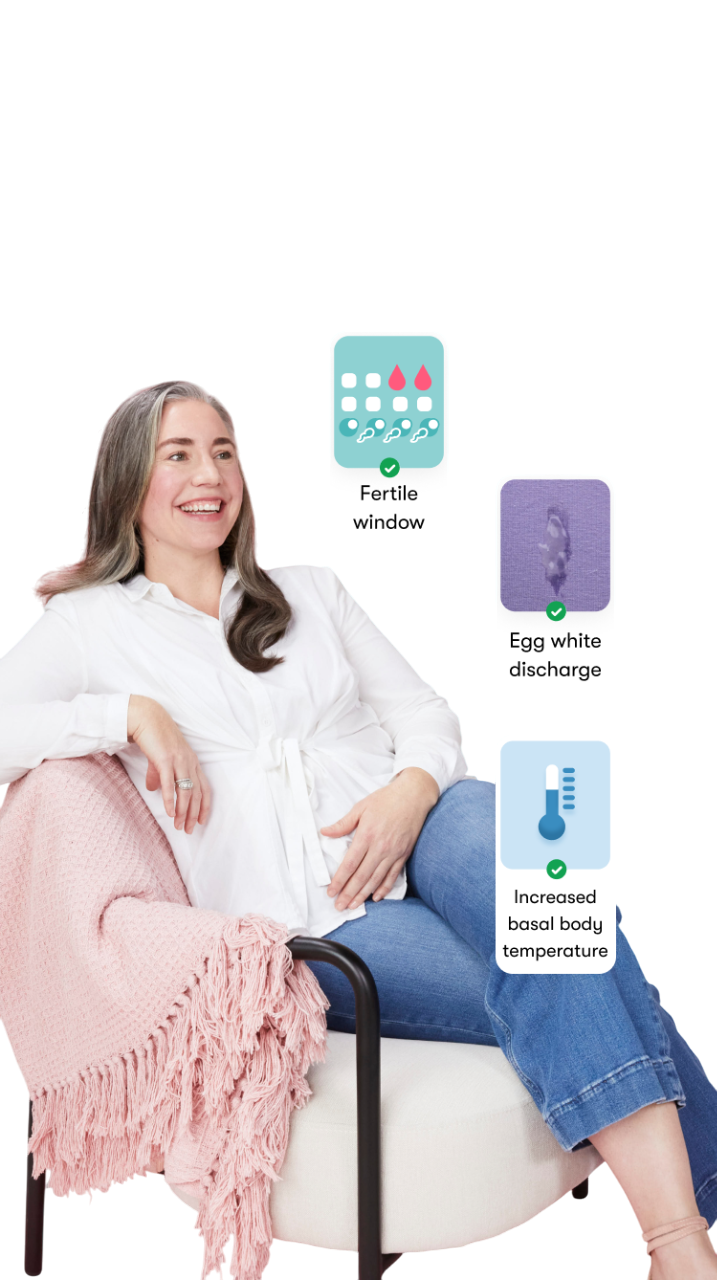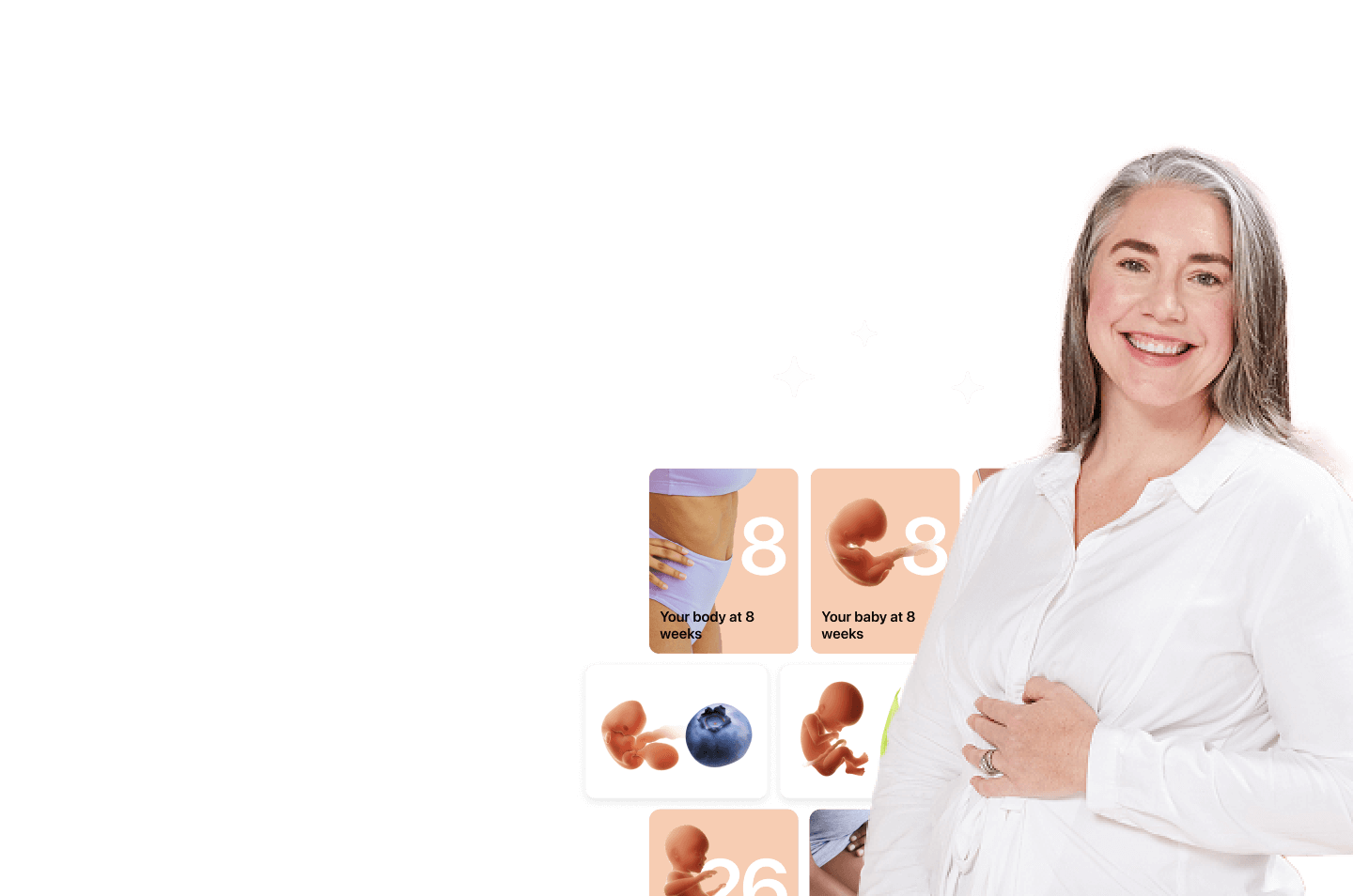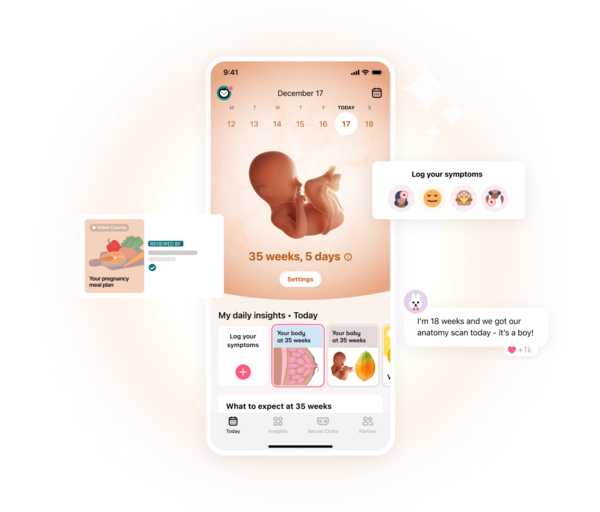Giving birth comes with lots of unknowns, which can make people nervous. But it can help to understand exactly what will be happening in your body. With help from a Flo expert, we break down the three stages of labor.
-
Tracking cycle
-
Getting pregnant
-
Pregnancy
-
Help Center
-
Flo for Partners
-
Anonymous Mode
-
Flo app reviews
-
Flo Premium New
-
Secret Chats New
-
Symptom Checker New
-
Your cycle
-
Health 360°
-
Getting pregnant
-
Pregnancy
-
Being a mom
-
LGBTQ+
-
Quizzes
-
Ovulation calculator
-
hCG calculator
-
Pregnancy test calculator
-
Menstrual cycle calculator
-
Period calculator
-
Implantation calculator
-
Pregnancy weeks to months calculator
-
Pregnancy due date calculator
-
IVF and FET due date calculator
-
Due date calculator by ultrasound
-
Medical Affairs
-
Science & Research
-
Pass It On Project New
-
Privacy Portal
-
Press Center
-
Flo Accuracy
-
Careers
-
Contact Us
The 3 stages of labor: What to expect


Every piece of content at Flo Health adheres to the highest editorial standards for language, style, and medical accuracy. To learn what we do to deliver the best health and lifestyle insights to you, check out our content review principles.
Most pregnant women feel nervous about giving birth, especially for the first time. There’s no way to predict exactly how labor will unfold for you, and other people really like to share their own personal experiences. While that isn’t always useful, what may be helpful is to gather all the information you can get about how it all works, or more specifically, the three stages of labor.
Understanding what to expect can help you to draw up a birth plan, which is important to think about before going into labor. While you probably know you won’t be able to “plan” every part of your birth, you can make sure you’ve thought about your preferences — from pain relief to delivery positions. Just remember to try to be as open-minded as you can about your choices.
With some help from Dr. Charlsie Celestine, obstetrician and gynecologist, New Jersey, US, we’ll walk you through the three stages of labor — the stages that come before the magic of meeting your baby for the first time. But before we dive in, it’s worth noting that this article only covers the stages of a vaginal birth, not a cesarean section (C-section). Learn more about a C-section.
Key takeaways: The stages of labor
- Labor is different for everyone, but it can be helpful to have an idea of what to expect at each stage.
- The first stage of labor is usually the longest, as contractions cause your cervix to dilate (open) and become softer, shorter, and thinner.
- The second stage involves pushing to deliver your baby.
- In the third stage, after your baby has arrived, you deliver the placenta.
- At each stage, you can take steps to help you manage any pain and discomfort.
- A pregnancy-tracking app like Flo can help you prepare for birth and guide you through your entire pregnancy. You’ll find a week-by-week tracker with all the expert info you need, plus a friendly space to chat with other parents-to-be.
The three stages of labor
As soon as you find out your due date (whether you wait for your doctor to confirm it or you use our due date calculator for an earlier estimate), you’re probably counting down to the moment you give birth.
Labor is a unique experience for everyone, but you may feel more confident about what’s to come if you know about the three stages.
First stage of labor: Early and active

In movies, the first sign of labor is often a dramatic gush at a less-than-ideal moment as the character’s water breaks. But in reality, that doesn’t always happen. In fact, it can start a lot more calmly than that, with early contractions often being mild, meaning you might have a few before realizing you’re in labor.
Contractions are designed to open up your cervix, known as dilation. They also make your cervix softer, shorter, and thinner. This is a process known as effacement, which allows your baby to move down into the birth canal. The first stage of labor is usually the longest, and it’s made up of two phases: early labor and active labor.
“In early labor — also known as latent labor — your cervix starts to change and open, up to 6 cm [dilated],” says Dr. Celestine. “Contractions aren’t usually that painful, and at first, they may come and go,” she adds.
You can read more about what contractions feel like here, but everyone has different pain thresholds and experiences things in their own way. So, some people may find early labor to be more painful than others. You can also scroll through Secret Chats, the space in the Flo app where members share stories and support each other, to read more about what labor feels like.
Take a quiz
Find out what you can do with our Health Assistant
As your cervix dilates, contractions will get more intense and regular, which is when you should head for the hospital if that’s where you plan to give birth, says Dr. Celestine. Each person and pregnancy is different, so it’s best to talk to your medical team for advice on when you should call them or go to the hospital. But in general, most health care teams recommend making contact when you have had contractions every five minutes, each one lasting one minute, for about an hour.
You move into active labor when you’re over halfway through dilation. “When you’re dilated to around 6 cm, you may start to feel more pain. This is when women often end up getting [pain relief like] epidural anesthesia,” she adds. There are various options for pain relief in childbirth, from an epidural to nitrous oxide (sometimes known as laughing gas). So speak to your doctor for more information to decide which — if any — you plan to choose.
Check out this table to compare what’s happening to you and your body in early labor versus active labor:
| Early labor | Active labor | |
| Your cervix | Dilates up to 6 cm | Dilates from 6 cm to 10 cm, on average around 1 cm per hour |
| Contractions | Usually mild but get stronger, and may stop and start | Closer together and become stronger and more painful |
| Other signs | Clear pink or blood-stained vaginal discharge as the mucus plug (a jelly-like substance that blocks your cervix to protect the baby) comes away | Water breaking, nausea, leg cramps, and/or a feeling of pressure in your back and rectum (it can feel like you need to poop) |
| Where? | Usually at home, unless yours is a higher-risk pregnancy, in which case your doctor will tell you it’s best to have extra monitoring | The hospital, birth center, or wherever you plan to give birth |
| How long? | Can last for hours or sometimes days | 4 to 8 hours or more |
How long does stage 1 of labor last?
“Everyone’s time frame is different, but in general, the first stage of labor is the longest,” says Dr. Celestine. “This is especially true if you’re a first-time mom because it can take longer for your cervix to open,” she adds.
If things are going slowly, your medical team may suggest giving you a synthetic version of oxytocin — a hormone involved in labor and delivery — to help strengthen contractions.
How can you help yourself manage this stage of labor?
To prepare for labor, some people like to read books, listen to podcasts, or attend in-person or online courses for advice on coping techniques.
Ultimately, different things work for different people, but some things you could try at this stage include:
- Taking a walk
- Listening to music (a premade playlist of songs you like)
- Practicing any breathing exercises or relaxation techniques you’ve learned
- Changing your position (for example, squatting, lunging, kneeling on all fours, or lying on your side)
- Taking a warm shower or bath
- Panting or blowing through the contractions once they get more intense
Second stage of labor: Delivering your baby

In the second stage of labor, it’s time to push as you go from being fully dilated to delivering your baby. “People often describe feeling pressure, as though they’re about to have a bowel movement,” says Dr. Celestine.
During this time, contractions tend to get slower, coming every two to five minutes. You’ll be told to push when you have contractions, and you can rest in between. Your medical team will probably tell you to stop pushing when they see your baby’s head is about to come out. This allows your vaginal tissues to stretch rather than tear.
“When your baby’s head is very close to coming out, you might feel a burning sensation around the vaginal opening, even if you’ve had an epidural. We call this the ring of fire,” says Dr. Celestine. This might sound a little intense, but it’s a good sign your baby is nearly here.
Your baby’s head and shoulders will usually come out first, followed by the rest of their body, unless they’re born in the breech position (meaning they come out feet or bottom first). The medical professionals in the room will clear their airway if necessary, then clamp and cut the umbilical cord shortly after delivery.
As part of your birth plan, there are lots of preferences you can consider around this part of labor. You can decide things like whether your baby is cleaned before being brought to you, how quickly their umbilical cord is cut, and who tells you the baby’s sex (if you don’t already know). Have a chat with your doctor if you want to talk through any part of your birth plan in the lead-up to giving birth.
How long does stage 2 of labor last?
There’s no one size fits all with any part of birth, which is why the delivery stage of labor can take anywhere from a few minutes to a few hours. Typically, it might last longer if you haven’t had a baby before and/or you’ve had an epidural. Other factors, including the size and position of your baby, might also impact how long this stage takes.
If doctors are concerned about the progress of your labor, they may suggest some options. One possibility could be to do an oxytocin infusion, which can help strengthen contractions and prevent problems like infections and damage to your pelvic floor. Remember that you can ask your medical team any questions at any point throughout your pregnancy and during labor to make sure you’ve got all the information you need before agreeing to any interventions.
How can you help yourself manage this stage of labor?
You never know how you’re going to find each part of labor, but putting some of the following advice into action may help:
- Follow your health care team’s directions on pushing. If you’ve had an epidural, you may need to be told exactly when to push, as you may not be able to feel it yourself.
- Try different positions to find what’s most comfortable — for example, sitting, squatting, kneeling, or being on all fours are all good options.
- Keep going with any breathing or relaxation exercises that you find are helping.
Third stage of labor: Delivering the placenta

If everything’s gone according to plan, now is the moment you finally get to hold your baby. You’ll probably feel very relieved the delivery is over. And it is! Almost. There’s still one more thing to do, but you’ve got the hardest part behind you.
“Contractions carry on to help move the placenta into the birth canal for delivery,” explains Dr. Celestine. These are much less painful than the ones you had in the first two stages of delivery, so you should be able to focus on your new arrival. Your doctor may give you medicine to encourage contractions and keep bleeding minimal. They’ll also check to make sure the placenta has come out in one piece and examine you to see if you need stitches.
Once the placenta is delivered, oxytocin causes your uterus to keep contracting. This helps it get back to its regular size over the next six weeks.
How long does stage 3 of labor last?
This is usually a pretty quick process, with the placenta typically being delivered within between five and 30 minutes, leaving you free to enjoy being with your baby.
How can you help yourself manage this stage of labor?
Having the more difficult stuff over and done with, most people find this part of labor more straightforward. Some things that are good to keep in mind include:
- Skin-to-skin contact and breastfeeding help to trigger the release of oxytocin, which encourages contractions to get your placenta out (and it makes you feel good). So if your baby has no complications that need treating, cherish those moments cuddling them. And if you plan to try breastfeeding, now is a good time to start.
- You should only need to push gently to deliver the placenta, but it’s still a good idea to follow your health care team’s guidance.
Taking care of yourself and your baby postpartum
Labor is an incredible process that’s unique to each person — and so is recovery. In the days after giving birth, you can expect to feel tired, tender, and emotional. “Try to rest as much as you can, and speak to your doctor if anything seems out of the ordinary — they’ll want to reassure you,” says Dr. Celestine.
Frequently asked questions about the stages of labor
How long does each stage of labor take?
Every person and pregnancy is different. But, as a general rule, the first stage of labor could last anywhere from hours to days. The second stage of labor shouldn’t take more than a few hours, and the third stage is usually over within about 30 minutes. Labor tends to last longer when you’re a first-time mom.
When should you go to the hospital when you’re in labor?
Talk to your doctor about when you should call or go to the hospital (or wherever you plan to give birth) if you notice signs of labor. Everyone is different, so a medical professional can give you personalized advice. They’ll consider how far you live from the hospital or birth center, any problems you have had during your pregnancy, and if you’ve given birth before.
But as a general rule, most health care teams recommend calling or going to the hospital when you have had contractions every five minutes, each one lasting one minute, for about an hour. This usually happens in the later part of the first stage of labor (active labor), once your cervix is making good progress with dilating. But remember, if you’re not sure if it’s the right time to go to the hospital, it’s always a good idea to call anyway. It’s OK if it turns out to be a false alarm.


Hey, I'm Anique
I started using Flo app to track my period and ovulation because we wanted to have a baby.


The Flo app helped me learn about my body and spot ovulation signs during our conception journey.


I vividly
remember the day
that we switched
Flo into
Pregnancy Mode — it was
such a special
moment.
Real stories, real results
Learn how the Flo app became an amazing cheerleader for us on our conception journey.
References
“Breech Baby.” Cleveland Clinic, my.clevelandclinic.org/health/diseases/21848-breech-baby. Accessed 21 Mar. 2025.
Cohen, Wayne R., and Emanuel A. Friedman. “The Second Stage of Labor.” American Journal of Obstetrics and Gynecology, vol. 230, no. 3, suppl. 1, Mar. 2024, pp. S865–75, doi:10.1016/j.ajog.2022.06.014.
“Delivering Your Placenta.” NHS Inform, 14 Jan. 2025, www.nhsinform.scot/ready-steady-baby/labour-and-birth/giving-birth/delivering-your-placenta/.
“Epidural.” Cleveland Clinic, my.clevelandclinic.org/health/treatments/21896-epidural. Accessed 21 Mar. 2025.
Hutchison, Julia, et al. “Stages of Labor.” StatPearls, StatPearls Publishing, 30 Jan. 2023, www.ncbi.nlm.nih.gov/books/NBK544290/.
“Labor Positions.” Mayo Clinic, 28 July 2023, www.mayoclinic.org/healthy-lifestyle/labor-and-delivery/in-depth/labor/art-20546804.
“Medications for Pain Relief during Labor and Delivery.” The American College of Obstetricians and Gynecologists, Dec. 2022, www.acog.org/womens-health/faqs/medications-for-pain-relief-during-labor-and-delivery.
“Methods for Estimating the Due Date. Committee Opinion No. 700. American College of Obstetricians and Gynecologists.” Obstetrics and Gynecology, vol. 129, no. 700, 2017, pp. e150–54, www.acog.org/clinical/clinical-guidance/committee-opinion/articles/2017/05/methods-for-estimating-the-due-date
“Mucus Plug.” Cleveland Clinic, my.clevelandclinic.org/health/symptoms/21606-mucus-plug. Accessed 25 Sep. 2024.
“Nitric Oxide (Inhalation Route).” Mayo Clinic, 1 Feb. 2025, www.mayoclinic.org/drugs-supplements/nitric-oxide-inhalation-route/description/drg-20060881.
“Oxytocin.” Cleveland Clinic, my.clevelandclinic.org/health/articles/22618-oxytocin. Accessed 21 Mar. 2025.
“Placenta: How It Works, What’s Normal.” Mayo Clinic, 8 Mar. 2024, www.mayoclinic.org/healthy-lifestyle/pregnancy-week-by-week/in-depth/placenta/art-20044425.
“Stages of Labor and Birth: Baby, It’s Time!” Mayo Clinic, 23 July 2024, www.mayoclinic.org/healthy-lifestyle/labor-and-delivery/in-depth/stages-of-labor/art-20046545.
“Stages of Labor.” Cleveland Clinic, my.clevelandclinic.org/health/symptoms/22640-stages-of-labor. Accessed 21 Mar. 2025
“The Stages of Labour and Birth.” NHS, www.nhs.uk/pregnancy/labour-and-birth/what-happens/the-stages-of-labour-and-birth/. Accessed 21 Mar. 2025.
“Uterus Involution.” Cleveland Clinic, my.clevelandclinic.org/health/diseases/22655-uterus-involution. Accessed 21 Mar. 2025.
“What Can I Do to Keep From Getting Vaginal Tears When I Give Birth?” Mayo Clinic, 9 July 2024, www.mayoclinic.org/healthy-lifestyle/labor-and-delivery/expert-answers/preventing-vaginal-tearing-during-childbirth/faq-20416226.
History of updates
Current version (09 April 2025)
Published (30 December 2019)
In this article

Get your personal guide to pregnancy with the Flo app
-
Follow your baby's growth week by week
-
Get expert info on symptoms, safe foods, and more
-
Chat with other parents-to-be




